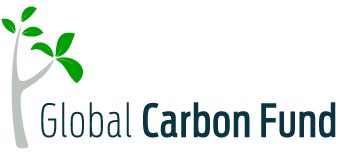Gold Standard Launches Global Carbon Market Regulations Tracker
Countries worldwide have implemented various strategies and mechanisms to measure and reduce emissions to address climate change effectively. Among these, the carbon market has emerged as a crucial tool to combat greenhouse gas emissions. In this sector, Gold Standard, a leading certification body, is playing a vital role in making this market more transparent and trustworthy.
With tools like the Carbon Market Regulations Tracker, they’re helping businesses, governments, and investors navigate the complex world of carbon offset regulations with ease and confidence.
Total, per capita, and historical emissions of selected countries and regions

A New Era for Carbon Market Regulations
Going back in time, Gold Standard launched the tracker in June 2024 under its “Gold Standard for the Global Goals”. This tool was developed by South Pole, the top climate consultancy company. Additionally, it was part of the “Enabling National Ownership in a High-Integrity Carbon Market” program and was funded by the German Federal Ministry for Economic Affairs and Climate Action (BMWK).
What Makes “Gold Standard for the Global Goals” Unique?
Gold Standard for the Global Goals is an impact standard for promoting climate security and sustainable development. It ensures two key attributes i.e. high integrity and credibility in measuring and verifying the positive outcomes of climate and sustainability projects.
They use proven methodologies, guidelines, and safeguards to measure and report the impact of climate and sustainability projects.
More significantly, Gold Standard’s tools and mechanisms have been praised by Oeko Institute, ASEAN Low Carbon Energy Programme, and Carbon Market Watch for its safeguards, gender provisions, and grievance-addressable techniques. This is how they are consistently raising the bar in climate action.
What Does the Carbon Market Regulations Tracker Offer?
The Carbon Market Regulations Tracker serves as a central hub for vital information. It includes standardized summaries, direct links, and details about regulations related to baseline-and-crediting market activities. The tracker covers both voluntary carbon markets and mechanisms under Article 6 of the Paris Agreement.
Inclusion and Exclusions
- Implemented and Planned Regulations: Covers current laws and those under consultation.
- Exclusions: This does not include carbon tax policies or emissions trading systems unless tied to carbon credits.
- Global Coverage: Provides insights across jurisdictions for a comprehensive understanding of carbon markets.
By hosting the tracker on its website, Gold Standard ensures it remains updated and relevant. The tool fosters market certainty and encourages knowledge sharing among key stakeholders.
Margaret Kim, CEO of Gold Standard, highlighted the tool’s importance, emphasizing that transparency and collaboration are essential for achieving global climate goals. This tracker provides clarity and guidance, enabling stakeholders to make better decisions in both compliance and voluntary markets.
Know more about the tacker from this video:
Collaborative Efforts with Article 6.2 Crediting Protocol
Carboncredits also reported on Gold Standard’s collaboration with Singapore’s National Climate Change Secretariat (NCCS) and Verra’s Verified Carbon Standard (VCS) to develop the Article 6.2 Crediting Protocol. This initiative aims to create a streamlined framework that helps countries meet their climate targets under the Paris Agreement.
Over the past year, NCCS, Gold Standard, and Verra have worked closely with governments and climate experts to develop initial recommendations. The protocol is expected to simplify emissions reduction efforts and foster sustainable growth through international cooperation. Countries can start using the protocol in 2025.
This effort demonstrates how collaboration can accelerate global progress toward net-zero emissions.
The Carbon Market Regulations Tracker and the Article 6.2 Crediting Protocol highlight Gold Standard’s dedication to creating high-integrity solutions for climate security and sustainable development. By providing reliable tools, the organization empowers stakeholders to act decisively in addressing climate challenges.
As carbon markets grow increasingly complex, resources like this tracker will be invaluable. They simplify regulations, build trust, and encourage investment in impactful climate solutions. Gold Standard’s efforts set a benchmark for transparency, collaboration, and innovation in the fight against climate change.
The post Gold Standard Launches Global Carbon Market Regulations Tracker appeared first on Carbon Credits.



































